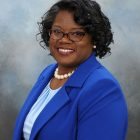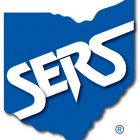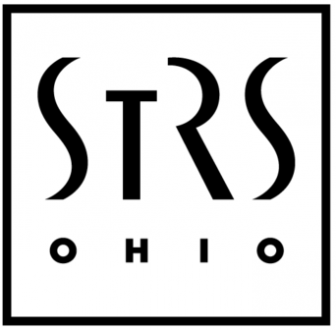OEA Endorses Correthers, Walters and Stein for STRS Board
On April 1, 2021, STRS members will be mailed a ballot for this year’s election for the STRS Board. Active employees who contribute to STRS will vote for one representative on the Board. There are three candidates for the active seat and OEA has endorsed Carol Correthers. Current STRS benefit recipients will vote for two retiree representatives on the Board. There are four candidates for the retiree seats and OEA has endorsed Rita Walters and Robert Stein.
When it comes to the oversight of retirement funds for Ohio’s teachers experience matters. OEA’s endorsed candidates are current members of the STRS Board running for re-election. They are hard-working, knowledgeable, and committed to acting in the best interest of all STRS members. Their primary goal is ensuring that STRS is strong and stable for the long haul. More information on each candidate appears below.

Carol Correthers (active seat)
Carol Correthers is an intervention specialist with over 20 years of experience in the Lorain City Schools. She is active in her local association and a former member of the OEA Board of Directors. Carol has served on the STRS Board since 2009. During this time, the funding level of the STRS pension plan has improved significantly. This makes the future benefit payments for active teachers more secure.
Rita Walters and Robert Stein (retiree seats)


Rita Walters retired with 35 years of experience as a classroom teacher with Switzerland of Ohio Schools. As an active teacher she also served as president of her local association and on the OEA Board of Directors for 12 years. Rita was elected to the STRS Board Ohio in 2017. Robert Stein is a retired teacher from Strongsville City Schools and was also a Praxis III assessor with the Ohio Department of Education. Bob has served on the STRS Board since 2009.
During their time on the STRS Board, the solvency of the STRS retiree health care program has vastly improved. Once, projected to run out of money in a few years, the health care plan is now over 100% funded. Additionally, STRS continues to be recognized as a premier public retirement system and the over 90% of retirees have favorable views of STRS.
Members will have three ways to vote when they receive their ballots: by mail, phone or online. The deadline for voting is May 3, 20021, however, OEA recommends that you cast your vote upon receiving your ballot.
STRS Receives Positive Marks on Member Satisfaction, Investments, Member Service
At the last two meetings, the STRS Board received reports on the views members have of the retirement system, investment returns, investment costs, and the quality of member service. These reports reflect positive views of members towards the system and high performance relative to other public retirement systems. A brief summary of this information appears below:
Member satisfaction: The Board reviewed results of a November survey of STRS members conducted by public opinion research firm Saperstein Associates. The survey included a random sample of STRS retirees and active members. A vast majority of members—more than 90% of retirees and more than 80% of actives—have positive views of STRS. About eight out of 10 retirees see the amount of their contributions relative to the benefits they receive as an excellent of good value. Large majorities of both groups think that STRS has earned the trust and confidence of its members and have favorable impressions of the STRS Board.
Investments: At the March meeting, the STRS received a report from CEM Benchmarking comparing STRS investment performance and investment costs to those of other pension systems. In total, STRS posted a 5-year return of 8.2% which was in the top decile of fund performance. Further, benchmark cost analysis showed that in 2019, after adjusting for fund size and asset mix, STRS had lower investment costs than other pension systems. By utilizing internal investment staff and securing lower fees, STRS net investment costs were .414% as compared peer costs of .554%. This difference of .14% equates to over $108 million in savings to the fund.
Member Service: CEM Benchmarking also released fiscal year 2020 survey results of 49 American and Canadian pension system that showed that STRS had the top service level of the group. STRS has had the highest service level in five of the last six years. Areas of high service included pension payments, call center, member presentations, benefit statements and disaster recovery.
 SERS Board Continues Sustainability Discussions
SERS Board Continues Sustainability Discussions
On Friday, March 19, the SERS Board continued ongoing discussions about sustainability of the pension plan. Through these discussions, the Board looks at plan design with a goal of ensuring the system is in position to withstand adverse changes in member demographics or investment returns. Areas of discussion included pension formula, definition of years of service, and pension spiking controls.
On pension formula, SERS staff presented information on systems that start with lower benefit formula and increase it as the employee reaches certain years of service thresholds. It was noted that such a formula would be difficult to implement with existing employees and could only be considered for new hires. Other practical questions include assuring adequate contributions and benefit levels for career employees.
The staff also presented information on the definition of years of service. SERS currently defines a year of service at 120 workdays and prorates service at lower amounts. Changing to a year based on 180 workdays was discussed. Such a change would result in over 16,000 SERS members who would receive less than a full year of service. It was posited that many employees who fall below the 180-day threshold are coaches, part time staff or substitutes and should not be earning a full year of service credit.
The Board also discussed concerns with pension spiking. Spiking is an increase in benefits by substantially increasing the final average salary beyond what is expected from normal salary increases. This results in a pension that is underfunded by contributions and thereby subsidized by all other members. Staff indicated that SERS could benefit from tougher anti-spiking rules. Like all changes discussed, a change in state law would be required. The Board indicated willingness to take a staff recommendation on pension spiking and seek such a change in the near term, separate from the broader sustainability discussions.
OPERS Posts Double-Digit Return
OPERS posted double-digit invest returns for calendar year 2020 for both the defined benefit plan and the OPERS health care fund. The defined benefit fund returned 12.02% for the year exceeding the assumed rate of 7.2%. The health care fund increased by 10.96%, compared to the assumed rate of 6.0%. The OPERS fiscal year ends on December 31, whereas STRS and SERS operate on a fiscal year that ends on June 30.
OPERS manages investment assets of over $98 billion in the pension fund and a health care fund of over $13 billion.
![]() Click here to download a copy of this March 2021 Report to the OEA Board of Directors. Previous Retirement Systems Updates can be viewed under the Affiliate Resources tab on the OEA website.
Click here to download a copy of this March 2021 Report to the OEA Board of Directors. Previous Retirement Systems Updates can be viewed under the Affiliate Resources tab on the OEA website.

